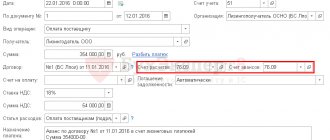Which employees need to be issued PPE, when is it necessary to purchase PPE?
Workwear is designed to ensure that the employee is protected from harmful and/or dangerous production factors during his stay at the workplace.
(high temperature, toxic fumes, radiation, mechanical damage, etc.). The purchase of PPE is necessary to meet the requirements of Art. 221 of the Labor Code of the Russian Federation, according to the standards of which employees involved in production with dangerous and harmful working conditions, as well as with high temperatures or a high degree of pollution, must be provided with:
- special clothing that has passed mandatory certification (declaration);
- personal protective equipment (respiratory protection, head, hands, insulating suits);
- flushing and/or neutralizing agents.
Order of the Ministry of Labor of the Russian Federation dated December 9, 2014 No. 997n approved Standard Standards containing a list of professions whose representatives must be issued PPE and workwear. The list and standard of clothing issued are specified in the Appendix to the said order. But the employer has the right to approve the standards for issuing free workwear independently, if this does not worsen the employee’s situation
(the issuance rate approved at the enterprise should not be less than the rate established by the authorities). Before approving quotas, the employer is obliged to conduct a special assessment of working conditions, and based on the results of the inspection, determine the norm for issuing clothing. An authorized official must be responsible for conducting workplace assessments.
Technical requirements for purchased PPE
The production of workwear is regulated by many GOSTs, which are used by manufacturers depending on the purpose and type of PPE. Important quality criteria are wear resistance, density, and color of the fabric.
The purchase of PPE should be carried out only after checking certificates of conformity or declarations of compliance with the requirements of the technical regulations of the Customs Union TR CU 019/2011 “On the safety of personal protective equipment”.
GOSTs do not establish the service life of PPE
, but contains requirements for the operation of PPE (the documentation for PPE must indicate the warranty period of use - not less than the operating time according to standard standards), storage, transportation, test control methods, labeling (the production date must be indicated on the product), accessories, materials, sizes.
Procedure for issuing personal protective equipment
Workwear should be issued to employees immediately upon employment and upon expiration of the PPE service life.
, which is calculated from the date of issue of the kit and ranges from 1 year until wear is reached. Clothing must correspond to the conditions and nature of work, the employee’s gender, height and clothing size.
According to the text of the Letter of the Ministry of Finance of the Russian Federation dated September 16, 2016 No. 03-03-06/1/54239, workwear is not the property of the employee, but is issued for temporary use, and therefore there is no need to charge personal income tax and insurance premiums when issuing workwear
. Since PPE is the property of the company, it must be returned to management if the following circumstances occur:
- dismissal of an employee;
- end of wearing period (a new set will be issued to replace the old one);
- transfer of an employee to another job that does not require the issuance of special clothing and other protective equipment.
Receipt and delivery of PPE must be recorded by making an entry in the personal record card for issuing PPE.
Is it possible to open a studio without a cash register?
According to the law, cash register equipment (cash register equipment) is required to be used in Russia when making cash or non-cash (bank cards) payments. This applies to:
- sales of goods;
- provision of services;
- performance of work.
The presence or absence of a cash register is influenced by the tax regime used by the entrepreneur:
| UTII | BASIC | simplified tax system |
| An individual entrepreneur can work without a cash register - just issue a receipt for payment | CCP is required | CCP is required |
Online cash register for the simplified tax system in 2021
Online cash register for UTII in 2021
Online cash register for services in 2021
Exceptions to the law are:
- Location in hard-to-reach areas where the use of CCP is physically impossible.
- Printed products in the appropriate stalls.
- Single-use and reusable passes for collective transport.
- Market, fair retail sales.
- Spread of the "lottery".
- Sale of shares, bonds.
- Trade in rural areas honey. drugs at paramedic stations.
- Small trade from carts, trays.
- Trade from melon and melon fields.
- Ice cream and soft drinks at specialized kiosks.
- Trade from tanks.
- Reception of glass containers and other waste.
Responsibility for non-compliance with the standards for issuing personal protective equipment
Business managers must purchase PPE and ensure proper storage, repair, replacement, washing and drying of workwear. The costs are borne by the employer himself, while employees receive PPE free of charge.
Legal entities and individual entrepreneurs must provide workers with personal protective equipment, focusing on the instructions of the Order of the Ministry of Health and Social Development of the Russian Federation dated June 1, 2009 No. 290n.
This document also specifies the rules for using PPE and organizing control to provide employees with PPE. Liability measures for company managers in case of non-compliance with the requirements of the Order are also prescribed. If you do not provide workers with special clothing and other personal protective equipment or do not comply with the service life of the personal protective equipment, administrative measures will be applied:
| Intruder | Amount of fine (rubles) for failure to issue PPE | Amount of fine (rubles) for non-compliance with the terms of use of personal protective equipment |
| Entity | 130 – 150 thousand | 30 – 50 thousand rubles |
| Individual entrepreneur | 20 – 30 thousand | 1 – 5 thousand rubles |
| Executive | 20 – 30 thousand | 1 – 5 thousand rubles |
If the labor inspectorate discovers a repeated violation, the company's managers and officials may be disqualified for a period of 1 to 3 years.
Purchasing PPE and paying insurance premiums
Part of the company's costs for the purchase of personal protective equipment can be offset against contributions in the event of occupational injuries. As part of the contributions, it is allowed to purchase domestic workwear from Russian-made materials, shoes and personal protective equipment in accordance with the Model Standards or the results of a special assessment of working conditions. You must also remember the following requirements:
- If a company buys personal protective equipment at the expense of budget funds (funds from the Social Insurance Fund budget are also recognized as such), it cannot deduct VAT (Letter of the Ministry of Finance of the Russian Federation dated June 20, 2021 No. 03-07-11/42124).
- An amount not exceeding 20% of the amount of contributions for occupational injuries accrued for the previous year, minus the amount of payments to employees for this type of insurance in the same year, can be offset against the payment of contributions.
Costing methods
The basis of production accounting is the calculation (calculation) of the cost of finished products. But the products can be very diverse - from needles to complex machines and ocean liners. Therefore, the calculation methods will differ.
The custom method is used for:
- Production of technically complex products with a long production cycle (mechanical engineering, shipbuilding).
- Construction.
- Work under a contract.
- Small-scale production.
In this case, a separate cost estimate or estimate is drawn up for each order.
The cross-cutting method is used if the finished product is obtained from the original raw material after several stages of processing. A typical example of such production is the food or oil refining industry. In this case, the cost is determined at each intermediate stage (redistribution).
The evaluated result of each stage (semi-finished product) is the raw material for the next cycle. At the last stage, the cost of the final product is calculated.
The boiler method is that all production costs are taken into account together (in one “boiler”). There is no analytical accounting. The cost per unit of production is determined by dividing all costs by the volume of output. Therefore, this accounting option is used by small enterprises or those companies that produce one type of product.
Purchase of PPE – tax accounting
According to the instructions of the Letters of the Ministry of Finance of the Russian Federation dated August 19, 2016 No. 03-03-06/1/48743, dated February 16, 2012 No. 03-03-06/4/8, dated November 25, 2014 No. 03-03-06/1/59763, For tax accounting purposes, the cost of personal protective equipment can be taken into account as an expense provided that all of the following requirements are met simultaneously:
- the enterprise carried out a special assessment of workplaces or certification of working conditions, and its results prove the validity of issuing special clothing;
- PPE is issued within the limits of standards (independently established at the enterprise or regulated by law) (Letter of the Ministry of Labor of the Russian Federation dated September 30, 2016 No. 15-2/ОOG-3519).
Important!
To write off PPE, you can develop your own procedure and consolidate it in the company’s accounting policy, and the inclusion of the cost of PPE in material costs should be made at the full cost on the date of issuance of PPE to employees.
Taxation: UTII, OSNO or simplified tax system
OSNO was initially developed for large-scale production. The simplified tax system is for small and medium-sized companies, and the UTII is for retail sales, small services, and catering. Advantages, disadvantages and features of the single tax on imputed value, the general taxation system and the simplified tax regime in the table:
| UTII | BASIC | simplified tax system | |
| Key Features | The amount of tax depends on the activity and the number of employees. | Movable property and real estate are subject to tax < 2.2%; The difference between income and expenses is subject to a rate of 20%; 18% VAT on products sold. | You can choose one of two modes: 6% – income tax; 5–15% – tax on income with the cost of expenses deducted. |
| pros | You can switch to it from the default assigned during registration (DOS) from any number; One tax is paid instead of three; Tax deduction to the budget - once every 4 months; Reporting – once a year. | It is more profitable for large companies to work with large suppliers who also pay VAT | One tax is paid instead of three; Transfer of tax to the budget - once every 4 months; Submission of reports - once a year |
| Minuses | Mode cannot be selected: Companies with branches; If the share of participation of other companies is more than 25%; If the number of employees is more than 100 people; If the balance of fixed capital is > 100 million rubles. | Strict requirements of the tax service for VAT reporting; Complex tax calculations; The burden of taxation is heavier than under other regimes. | Mode cannot be selected: Firms with representative offices; If the share of other companies is more than 25%; If the number of employees is more than 100 people; If the balance of the main budget is > 100 million rubles. |
Important! UTII is calculated according to the following scheme: (Basic profitability) x (number of employees) x (region coefficient for engaging in this activity) x (single indicator for the Russian Federation) x 15%.
Example: 8,000 thousand rubles. x 4 employees x 1.891 (coefficient for 2017) x 0.7 (approximate figure) x 15% = 6,353.76 rubles. – UTII for the current month.
Purchasing PPE – accounting
The purchase of personal protective equipment is displayed in accounting as follows:
| Operation | DEBIT | CREDIT |
| The service life of workwear is 12 months or less | ||
| Purchasing PPE | 10-10 | 60 |
| Acceptance of input VAT on PPE for accounting | 19 | 60 |
| Acceptance of VAT deduction | 68 | 19 |
| Issuance of PPE to employees | 20 (23, 25, 26, 44) | 10-10 |
| The service life of workwear is more than 12 months | ||
| Issuing uniforms to employees | 10-11 | 10-10 |
| Write-off of part of the cost of PPE as expenses (monthly in equal parts during the service life of the PPE) | 20 (23, 25, 26, 44) | 10-11 |
Inventory in the studio
Preparation of financial statements is a mandatory requirement for an audit. To account for goods and control personnel in warehouses, inventory is carried out monthly. The audit proceeds as follows:
| Steps | Events | Documentation |
| Preparation, formation of the commission | Issuing an order about the event; Creation of a commission (usually the owner of the studio and an accountant or the owner in one person) | INV-22 |
| The audit itself, recording its results | In the inventory, the column “Actual availability” is filled in with the result of measurement and recalculation of property | INV-3 |
| Reconciliation of results based on fact and accounting | Drawing up a statement comparing actual and documentary results; If necessary, documents are drawn up to explain discrepancies | INV-5 INV-6 INV-16 INV-19 |
| Reflection of inventory results in accounting | Issuance by the manager of an order approving the results of the audit, which serves as the basis for entering the relevant data into the accounting books | INV-26 Order on approval of results |
Common mistakes
Error:
The employer issues special clothing to workers in hazardous industries, deducting its cost from the employees' salaries.
A comment:
The purchase of PPE is carried out at the expense of employers, not employees. Employees are provided with PPE free of charge.
Error:
The enterprise pays for PPE with the amounts offset against insurance contributions to the Social Insurance Fund for injuries. Imported workwear made from materials from a foreign manufacturer.
A comment:
Using FSS funds, it is allowed to purchase exclusively domestic workwear from materials from a Russian manufacturer.
Answers to common questions on the topic “Purchase of PPE: issuance, accounting”
Question #1:
Is it possible to deduct the cost of special clothing from the salary of a dismissed employee if the employee did not return the set of clothing issued to him upon leaving?
Answer:
No. The Labor Code does not provide for such a procedure. However, if local regulations specify the procedure for returning or reimbursing the cost of workwear, you can sue the employee and recover damages.
Question #2:
What kind of workwear should Russian companies purchase - domestic or imported?
Answer:
According to the Ministry of Labor of the Russian Federation, it does not matter whether the fabric was produced abroad or in Russia. However, starting from 2021, some requirements for fabric manufacturers apply - most likely, it will be possible to purchase foreign PPE from 2021, because According to the department’s plans, the changes will come into force after August 1, 2021.
What to do with work clothes that have been returned
Since ownership of the workwear remains with the employer, the employee is obliged to return it:
- upon dismissal;
- when transferred to another job for which the use of the special clothing issued to him is not provided.
This is stated in paragraph 64 of the Methodological Instructions, approved by order of the Ministry of Finance of Russia dated December 26, 2002 No. 135n.
If an employee does not return the workwear, its cost can be deducted from his salary. The same can be done if an employee, through his own fault, damages or loses his workwear.









